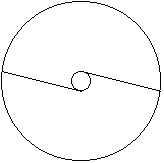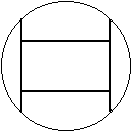
 |
Insulator Threading Survey |
At least four threading patent processes were used by the New England glass companies in the 1880's. This includes the American Insulator Co., the National Insulator Co., and the Standard Glass Insulator Co. Both Samuel Oakman and Lawrence Gray had threading patents used in this timeframe. The intent of this survey is to catalog the threading styles on various base embossed or unembossed pieces that have these characteristics. Boston Bottle Works pieces are not included as they used primarily segmented threading (3 or 4 segments).
The threading patents and identification techniques:
Samuel Oakman's Sept. 13th, 1881 patent: (US Patent 247,100):
This patent was to first make a threaded glass cylinder in advance, which is then plunged with the mandrill into the insulator to be formed removing the need to rotate out the plunger from the formed glass. Of the four patents shown, this is probably the most difficult to identify. Insulators threaded with this process will not have any mold lines in the threading, tend to have crude or somewhat deformed threads as the cup could get soft in the molten glass. One can also sometimes see the glass seam between the inserted cup and the rest of the insulator. The CD 134 base embossed OAKMAN have this threading style.
Samuel Oakman's Sept. 9th, 1884 patent (US Patent 304,748):
This patent used a hinged mandrill with a segmented center section that when removed would let the hinge collapse and be easily removed from the pinhole. These pieces can be identified by the hinge mark in the dome and four mold lines on the threads. Another property of this threading style is that there are minimal threads towards the top of the pinhole.
 This illustration
shows the hinge mold lines at the top of the pin hole.
This illustration
shows the hinge mold lines at the top of the pin hole.
Laurence Gray Oct. 7th, 1884 patent (US Patent 306,146):
This patent had a removable center of a three section mandrill. This threading technique is easy to identify as there are two segmented threads. This threading can be found on many of the CD 110.5 National corkscrew insulators.
Laurence Gray & Joseph Ham Oct. 7th, 1884 patent (US Patent 306,147):
This patent was for a removable segmented mandrill with four sections to form a fully threaded pinhole. This patent can be identified by the rectangular impression in the dome and four mold lines on the threads. Every known insulator marked Standard Glass insulator Co. has this threading type.
 This is what the mold lines in the top of the pinhole typically look like for
this patent.
This is what the mold lines in the top of the pinhole typically look like for
this patent.
To try and get a better understanding of the timeframe and users of these patents I'm looking for threading information by McDougald price guide line number.
Please look at your New England insulators and report their threading styles. Send Email to NIA_Site_Webmaster with your input. Credit will be given to contributors to the survey and the data will be added to the table.
 Return
to the National Insulator Association page
Return
to the National Insulator Association page